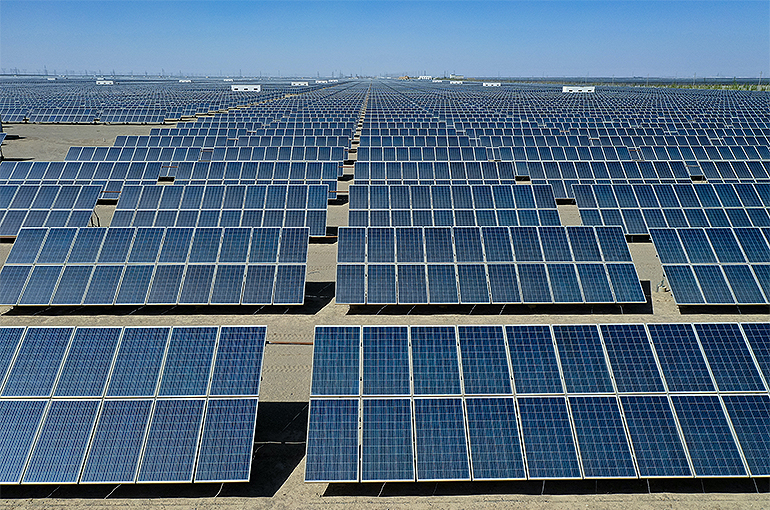 New US Tariffs to Force Chinese Solar Firms to Ditch SE Asia, Expand Elsewhere Overseas
New US Tariffs to Force Chinese Solar Firms to Ditch SE Asia, Expand Elsewhere Overseas(Yicai) July 4 -- Southeast Asia will no longer be a safe haven for Chinese solar companies because the United States is about to introduce new tariffs on imports of solar cells and panels from the region, forcing them to seek alternative locations for overseas expansion.
After investigating imports of crystalline silicon photovoltaic cells, assembled into panels or not, from Cambodia, Malaysia, Thailand, and Vietnam, the US International Trade Commission said last month that there is a reasonable indication that the products are sold at less than fair value in the US because they are subsidized by local governments.
As a result, the USITC will unveil preliminary countervailing duties on solar cells and modules from the SE Asian countries by July 18 and related antidumping duties by Oct. 1, it said.
It is cheaper for Chinese PV companies to build factories in SE Asia, Zhao Yi, a solar industry analyst at InfoLink Consulting, told Yicai. These plants used to export products to the US and other overseas regions, he added.
The uncertainty surrounding investments in solar industry projects in SE Asia are rising because of the USITC investigation, which will likely involve more countries in the region soon, Zhao said.
“Many Chinese firms have already started building plants in the US in the past two years to avoid trade frictions and enjoy local government incentives,” Zhao noted. “But there are also risks, such as adapting to local policies, regulations, and business environment, bearing high construction costs, and applying for related patents.”
An expert on the PV sector said Chinese industry leaders have given up plans for SE Asia and started building plants in Mexico and the US. But those that recently built plants in Cambodia, Malaysia, Thailand, and Vietnam have not yet recovered their costs, so their best choice in the short term may be to move to neighboring countries that have not yet been affected by the US investigations. They include Laos, Myanmar, and Indonesia, the person said.
Alternative Locations
Trina Solar will adjust the production plans of its factories in Thailand and Vietnam based on US client demand, the Chinese solar module giant told Yicai, adding that the factories it is building in the US and Indonesia were not affected by the USITC investigation.
The company’s US plant is expected to come on stream this year. The 5-gigawatt PV panel joint venture in Ohio of Longi Green Energy Technology, the world’s biggest solar panel maker, started up in the first quarter of this year.
The Middle East is another emerging destination for Chinese PV companies, with local demand for solar power rapidly rising. The region’s need for solar power installations was between 23.6 GW and 20.5 GW last year and will likely reach 29 GW to 35 GW in 2027, according to InfoLink Consulting data.
Trina announced last October that it would build a big manufacturing base to make products along the solar industry supply chain, such as high-purity silicon materials, silicon wafers, and battery modules, in the United Arab Emirates.
TCL Zhonghuan Renewable Energy Technology, the world’s second-largest supplier of monocrystalline silicon wafers, announced in May last year that it would construct a silicon wafer factory with an annual output capacity of 20 GW in Saudi Arabia.
Last month, Drinda New Energy Technology unveiled plans to invest USD700 million in a high-efficiency PV cell plant with an annual production capacity of 10 GW in Oman.
Some other solar companies are mulling factories in Europe. It is still very risky to build plants in Indonesia, Laos, or the Middle East, so Aiko Solar Energy will give preference to Europe if the opportunity presents itself, especially with the latest subsidy policies, Chairman Chen Gang told Yicai.
Diversified investment has become a trend for major Chinese solar firms to address trade frictions. Jinko Solar has three overseas factories in Malaysia, Vietnam, and the United States, Vice President Qian Jing told Yicai, adding that the US plant has already started production.
Editors: Tang Shihua, Futura Costaglione